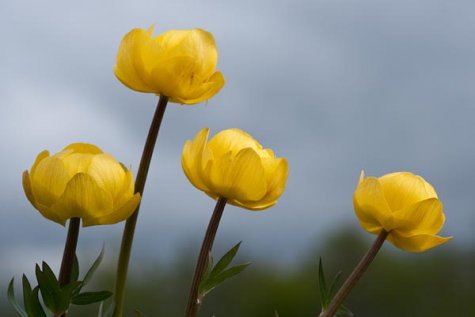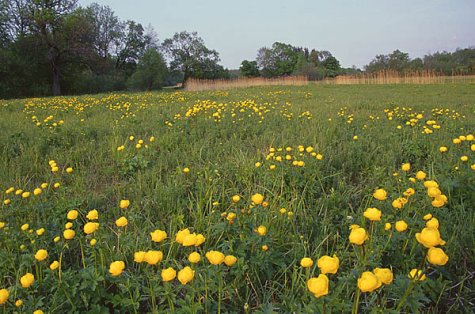The globeflower just must be described
Photos: Arne Ader
Translation: Liis
Globeflower
Globeflower Harilik kullerkupp Trollius europaeus
Globeflowers are the favourite flower of many – they have been beautifully captured in paintings and are no strangers in poems.
The globeflower, of the buttercup family, prefers humid meadows and wooded meadows as habitat; we can find it at forest verges too. Common everywhere on the mainland, less often found on our islands.
Wild globeflowers – that begin to flower in the second half of May – are planted by gardeners into their own flowerbeds (the perennial “new ward” with a short rhizome tolerates it well) – with suitable soil fertility, humidity and light conditions the plants become truly luxuriant and new flower stems are added. In gratitude for the gardener’s care?
Even in nature the globeflower can grow up to three quarters of a metre high but typically the plants are lower. The stem is smooth, the leaves deeply pinnately lobed, sligthly glossy and remain green even in August. No other Estonian plant has such ball-shaped flowers as the globeflower. Tt turns out that the bright yellow ”petals” are instead tepals and the petals that are in the centre of the flower outside the stamens have changed into nectar glands. It has more pistils as well than other flowering plants. How and who is let into the globe to pollinate the globeflower? Small insects who creep in between between the tepals can get in to pollinate; larger bugs have no business there. But the globeflower fly lies its eggs on the flowers and pollinators are the fly larvae that develop in the flower. The larvae in turn feed on the globeflower seeds.
The splendour of the flowers on a globeflower plant lasts for a couple of weeks; one plant may have some twenty up to forty flowers. In early July we see the dry seed follicles that hold a great number of seeds.










